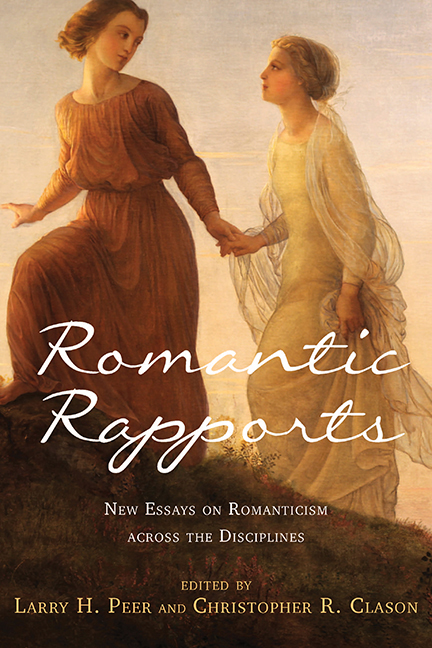Book contents
- Frontmatter
- Dedication
- Contents
- Acknowledgments
- Introduction: The Polyvalence of Romanticism
- Part I Romanticism and the Literatures
- Part II Romanticism, Music, and the Visual Arts
- 5 Liminal Transgressions: Gautier's Vampires in Giselle and La morte amoureuse
- 6 The Iconography of Girodet's Endymion during the French Revolution
- Part III Romanticism and Science, Technology, Philosophy
- Notes on the Contributors
- Index
6 - The Iconography of Girodet's Endymion during the French Revolution
from Part II - Romanticism, Music, and the Visual Arts
Published online by Cambridge University Press: 30 August 2017
- Frontmatter
- Dedication
- Contents
- Acknowledgments
- Introduction: The Polyvalence of Romanticism
- Part I Romanticism and the Literatures
- Part II Romanticism, Music, and the Visual Arts
- 5 Liminal Transgressions: Gautier's Vampires in Giselle and La morte amoureuse
- 6 The Iconography of Girodet's Endymion during the French Revolution
- Part III Romanticism and Science, Technology, Philosophy
- Notes on the Contributors
- Index
Summary
IN EIGHTEENTH-CENTURY FRANCE, when the monarchy fell, so too did the Académie royale des beaux-arts and the security of official patronage from the church and aristocracy, nearly crippling the production of traditional Judeo-Christian and historical subjects. To reform this newly orphaned institution, the government appointed as its new leader the foremost French Neoclassicist, Jacques-Louis David (1748–1825), whose work had come to epitomize Enlightenment and revolutionary ideology, and who had already proved himself as an artistic and political leader. His protégés were encouraged to become paragons of Republican virtue and were called on to generate artworks that honored secular values. Artists in this circle were under tremendous pressure to bolster the people's will and to derail the perception of art as a parasitic luxury of the elite. Such artists were even a bit ahead of the curve by unwittingly anticipating succession from monarchical control. David, for instance, was a member of the Commune des arts (Commune of the Arts), which by 1790 had petitioned the National Assembly for the dissolution of the Royal Academy altogether because it had been founded by the king in 1648. Later David was famously a member of the Jacobin Party (largely responsible for the “Terror” of 1793), and went on record to vote to execute Louis XVI (McClellan, 306).
As an illustration of Enlightenment thought, David's methods implied fundamental truths and unwaveringly legible morality (Diderot, 196). Under the Republic's agenda, the arts were recruited to portray revolutionaries as civilized, such that the Salon and the nation's collection at the Musée du Louvre, mostly featuring confiscated artworks from aristocrats, the monarchy, and the church, became a microcosm of public sentiment, revolutionary politics, and national identity. Quickly the superimposition of secular religiosity on the arts was evident, such as when the Festival of Unity was paired with the reopening of the Louvre on August 10, 1793, and participants drank from a “fountain of regeneration” to symbolize being absolved of their monarchical past before proceeding to the museum (McClellan, 304–5).
- Type
- Chapter
- Information
- Romantic RapportsNew Essays on Romanticism across the Disciplines, pp. 96 - 120Publisher: Boydell & BrewerPrint publication year: 2017



